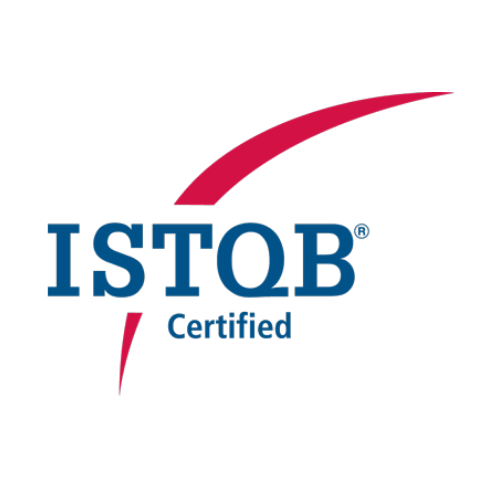We’re currently in a time where technology has evolved so much that we’re able to teach machines how to learn new concepts. Even more surprising, these same techniques can be applied to teach machines how to learn on their own.
With the evolution of machine learning, many industries and businesses alike are implementing this new technology into their workplace to transform productivity and efficiency. In this complete guide, we’re here to break down everything you need to know about machine learning and why you should begin to incorporate it into your business.
What is machine learning?
Machine learning is a form of artificial intelligence (AI) and in which systems act, learn and improve from experience continuously and automatically – in the same way that humans do – rather than being explicitly programmed to do so. Machine learning focuses on feeding computer programs data and information in the form of observations and real world interactions with the aim that the computer program will access this data and use it to learn for themselves.
Using machine learning in business is far superior to using human intelligence, as it allows computers to learn automatically without being dependent on human intervention. Machine learning is dependent upon a computer to identify and recognise patterns.
You can even outline a specific set of rules for your machine to learn. This specific set of rules is referred to as an algorithm. When using an algorithm, the computer will find complex functions from data that it’s collected to make predictions on this data.
To break it down even further, you can summarise the entire process of machine learning in three steps:
- Collecting data
- Finding patterns in this collected data
- Predicting future patterns based on this data
Keep in mind that this is a fundamental breakdown of how machine learning works. However, the core concept of machine learning is to allow computers to learn and identify these patterns automatically without the intervention of human intelligence.
How does machine learning work?
By using artificial intelligence, machine learning works in a very similar way that humans learn. By learning about new experiences and improving upon those past experiences, machines will begin to understand and predict patterns.
Machine learning works by looking through data and finding patterns. When fully developed, machine learning won’t need any human interaction or intelligence to help the machine identify patterns.
Using computational methods to “teach” information to a computer from direct data, machine learning isn’t dependent upon predetermined equations to operate. By using an algorithm to improve the performance of machine learning, machines will have an increased ability to learn and be independent of human interaction.
As an example, one type of specialised form of machine learning is referred to as deep learning. Technical machine learning can be utilised to generate insight to make better decisions, as well as predictions, for certain industries. For example, online retailers will use machine learning to gain information into the purchasing behaviours of their customers.
Machine learning uses a few techniques to train computers. Let’s take a closer look at these techniques and what they means for future data prediction:
Supervised Learning
Supervised learning is dependent upon training a model to know the output data, as well as the input data. This is so that the model and training will be able to predict future outputs.
In machines that are learning machine learning with supervised learning, they will have input variables and output variables. An algorithm will be used to map the function to teach the machine how data altars from the input to the output.
Using supervised learning for machine learning will map the functions so that the machine will know output variable predictions based on the new input data.
This type of learning technique is referred to as supervised learning because it uses the process of an algorithm. By using an algorithm, it allows machines to learn from the training provided by the data set. In other words, you can think about the supervised learning technique for ML as a type of teacher supervising the entire learning process for the machine.
With supervised learning, you will already have the correct answers before you feed the machine the data. If there are any incorrect predictions, you will have the ability to correct the machine. You will end the supervised learning training process with the machine when the algorithm can achieve consistent and accurate predictions on a consistent level.
Semi-Supervised Learning
By combining unsupervised machine learning and supervised machine learning, you get a process referred to as semi-supervised learning.
Semi-supervised machine learning is important because it will give you the ability to get more data necessary to complete the machine learning training process. If you don’t have all of the data that you need to create an accurate machine learning model, semi-supervised learning techniques can work to increase how much training data you have.
With semi-supervised machine learning, you can label all the data that you have collected or are aware of. However, the rest of the data that you need to collect during the training process will remain unlabeled.
After more data has been harvested with the semi-supervised machine learning techniques, you can apply the newly collected data to a new training model. This will allow the machine to work to accurately identify new data by using the supervised machine learning method.
Unsupervised Learning
The process of unsupervised learning uses an algorithm to identify patterns from data, without any labelled or identify the outcomes presented from this data. The unsupervised machine learning technique can’t be applied to a classification problem or a regression problem. This is because when you’re inputting the data into the machine, you won’t know any values for the output data.
Therefore, it makes it impossible for you to provide the machine with an algorithm that you can train it with. Instead of using unsupervised learning to Entirely train the machine to predict patterns, you can use this learning technique to identify the structure of data.
Unsupervised machine learning is great to use for association mining, anomaly detection, clustering and latent variable models. With the patterns that you’re able to discover with the unsupervised machine learning technique, you can use the information that you’ve collected to implement into supervised machine learning techniques later on down the road.
Reinforcement Learning
Reinforcement machine learning is a type of training process that requires the machine to learn data so that it can make a specific sequence of decisions. The underlying goal of reinforcement machine learning forces the AI to employ trial and error to develop a solution to a problem.
Artificial intelligence will work off of the penalties or rewards about the program or provide the machine based on the actions that are performing. AI will want to maximise its potential to earn rewards.
Keep in mind that the designer of the reinforcement learning algorithms will outline what the rules of the problem-solving are and what the reward is. However, the machine won’t have any suggestions or hints on how to identify the best solution for the problem.
The computer will be responsible for figuring out how to maximise the reward that it’s given, starting with random trials to develop an idea of patterns. Once the machine understands what the penalties and rewards are for the actions that it performs, it will begin to finish sophisticated tasks and solve problems successfully.
Reinforcement learning is one of the most effective ways that you can develop a sense of creativity in the machine.
What can machine learning do?
As computing technologies have continued to evolve, machine learning isn’t the same thing that it was five to ten years ago. Machine learning continues to develop, it continues to become a key technique for solving problems across various niches.
Some of the most popular industries in the world, such as energy production, language processing, computational biology, aerospace and manufacturing, are dependent upon machine learning.
For example, DNA sequencing, tumour detection, voice recognition, motion detection and face recognition are all solutions that are heavily dependent upon machine learning.
Why is machine learning important?
Data is the blood of your business. Making decisions driven by data and the value that it has to your business will make a huge difference in between your company falling behind your competition or surpassing your competition.
With the use of machine learning apps, you can unlock the value of your customer data and your corporate data. This will give you the ability to make decisions that keep your company ahead of the competition in all aspects.
Many industries around the world have large amounts of data that can develop recognised value with the use of machine learning. By gathering insight into the data and evaluating what it can add to a company, organisations across all industries can identify how they can work more efficiently.
Plus, the same data can also provide them with an insight on how they can gather an advantage over their competition.
Artificial Intelligence (AI) vs. Machine Learning (ML) vs. Big Data
As you’re researching data management solutions for your company, you’ll likely come across machine learning, big data and artificial intelligence.
But, what exactly do these words mean?
Understanding the key differences between artificial intelligence, machine learning and big data will help you to break down the best possible solution for your company. Let’s take a closer look at what each of these terms means:
Artificial Intelligence
Artificial intelligence is commonly referred to as AI. While artificial intelligence has been around since the 1950s, has recently become extremely popular because of advancements made in its capability to process data.
As implementations and algorithms have continued to improve and grow, you cannot run artificial intelligence on nearly any smartphone, commodity hardware, or laptop. This means that there are endless possibilities to how artificial intelligence can input and compute data.
Artificial intelligence gives users the ability to feed input to computers, by enabling machines to understand data. Also, AI provides computers with the ability to learn from data and make decisions on patterns it finds in the data. Artificial intelligence is also capable of interfering with data to make it nearly impossible for humans to interfere manually.
You can adjust the knowledge and input capabilities of machines by using artificial intelligence. By collecting mathematical algorithms, artificial intelligence helps computers understand relationships between specific types of data to come to a conclusion or make a decision that could be highly beneficial or accurate.
However, you must have enough data to feed the artificial intelligence work to learn from truly. If you don’t have a large variety of data that you’re using to provide your artificial intelligence knowledge, decisions and predictions can be extremely low and accurate.
The more data that you’re able to feed it to your artificial intelligence, the more accurate the decisions or predictions will become. Also, you’ll have the ability to choose between several different algorithms for your artificial intelligence technology. Depending on what algorithm model that you choose to use, you may start to notice deep learning and machine learning beginning to develop in your artificial intelligence technology.
Machine Learning
Machine learning is considered to be a branch of artificial intelligence. Whenever you think about the capabilities of artificial intelligence, you’ll also have an understanding of how machine learning works.
Machine learning works by taking large amounts of data that is previously received in the past and making decisions or knowledge based on the new pieces of information that you feed into the system.
There are several different ways that a machine can go about learning to make predictions or decisions. These other teaching techniques are referred to as semi-supervised learning, reinforcement machine learning, non supervised learning and supervised learning. During these training methods, a human will feed the machine-independent variables and dependent variables.
After being fed at these independent and dependent variables, a machine will recognise specific patterns or output based on the data that’s being provided. After the training phase for the machine learning is completed, the machine will be fed a piece of data that it hasn’t yet been fed before.
Once the machine has matured enough to give highly accurate and reliable results, a business will use the machine for classifications of problems and predictions in future data.
Big Data
Big data is the process of collecting, as well as analyzing large pieces of data. During the big data analytics process, information such as market trends, customer choices and other hidden patterns will be analyzed. During a big data collection and analyzation, data will be looked at and characterised.
The characterisation of data during the big data processed will be sorted, depending on the day extreme volume of data, the velocity at which the data has to be processed and it’s the variety of data types. Big data is commonly used by companies to make strategic business moves, as well as make better purchasing decisions for the organisation.
The easiest way to understand the difference between big data and machine learning is knowing that machine learning is a technology that backs up suggestions made on your favourite streaming service, self-driving cars and other advancements in technology. However, big data is commonly used by businesses for collecting sales data, completing financial research and other business-backed decisions.
Big Data collects data and information from resources that are already existing in an attempt to identify emerging patterns. This helps to shape the decision-making process for many organisations. However, machine learning learns from the currently existing data to provide an accurate prediction of what the future may look like.
Machine Learning Algorithms
Understanding the most commonly used algorithms in machine learning will help you to understand what types of algorithms will be applied to the data that you’re providing to your machine. Here are some examples of commonly used machine learning algorithms:
- Linear Regression
- Decision Tree
- K-Means
- GBM
- SVM
- Logistic Regression
- Naive Bayes
- XGBoost
- Random Forest
- Dimensionality reduction algorithms
By learning about what methods are available for machine learning, it’ll help you to identify the most common algorithms that you’ll come across in the field. Understanding the approach of each type of algorithm will help you to understand the different types of algorithms and how algorithms can be grouped in usefulness and similarity.
Machine Learning Best Practices
Now that you have a solid understanding of what machine learning is and how it could benefit your business, it’s time to dive into the best practices you should utilise when using machine learning.
Identify Business Opportunities
The most crucial step that you could take before you implement machine learning into your business is to identify your business opportunities. This means that you’ll have to set time aside and evaluate the actual project.
During this step, understand how machine learning will impact your business. Learn how it will reduce your overall costs, aid in breakthroughs for your business and automate jobs. You will also need to understand how to translate any problems that your business is facing into data that machine learning will be able to input.
Prepare for Deployment
To ensure that your machine learning project is successful, you must understand the impacts that beat. It will affect your business. Having realistic expectations on how the project is going to impact your business will ensure that you’re able to continue growing and learning.
When you start your machine learning project, you should have your data ready to go, a measurable impact, realistic expectations and a well-defined question that you’re searching the answer for.
Who is using machine learning?
Many industries that are managing big data have understood and realised the value that machine learning that can offer to their business. By collecting large amounts of data and inputting it into machine learning, these industries can gain an advantage over their competition.
Financial Services
The financial industry is dependent upon machine learning to identify important trends in fiscal data, as well as preventing fraud. By using machine learning to identify potential opportunities for investments, many investors also use machine learning to help them identify the best times to trade.
Government
Government agencies use machine learning to mine through insights to help better serve Public Utilities, as well as public safety. Machine learning is responsible for identifying ways to help the public save money while also receiving an increased level of efficiency from government agencies.
Also, the government uses machine-learning to reduce identity theft and fraud.
Healthcare
Thanks to the developments in machine learning, the healthcare industry is thriving now more than ever. Sensors and other wearable devices are a prime example of how machine learning can be used to assess the overall well-being of an individual, in real-time.
By collecting data, machine learning can be used to identify any abnormalities in the health of an individual. Machine learning also has the capability of alerting the treatment professionals responsible for managing a patient. Machine learning is used to identify and analyze trends that can help to lead healthcare professionals to a correct diagnosis, faster.
Retail
The retail industry has been using machine learning to collect and analyse the shopping experience for individuals in real-time. By collecting and identifying algorithms, machine learning has been helping the retail industry expedite enhanced targeting advertisements to suit the needs better and wants of specific customer behaviours.
Gas and Oil
Gas and oil industries utilise machine learning to translate data that is collected real-time into insights that should be taken action on. From boosting efficiencies, just saving time, to improving safety and reducing costs, machine learning has several crucial outcomes that are critical to the well-being and effectiveness of the gas and oil industry.
Transportation
From delivery companies to transportation organisations, to public transportation, machine learning plays a huge role in identifying trends and patterns in this industry. This helps all types of transportation companies to make efficient routing by predicting potential problems in current routing trends. As a result, this allows the transportation industry to see an increase in profitability.
Understanding the Importance of Machine Learning
By harnessing and mastering the power of machine learning to use that to make better decisions for your organisation, you’ll be able to unlock the capabilities that your business has to offer. Whether you’re looking to use machine learning to handle big data, to learn and recognise potential trends, or to stay ahead of your competition, machine learning can transform your organisation.
Are you looking for help implementing and utilising machine learning into your business or enterprise? We are here to help make the process easy on you. Click here to contact us today to learn how we can help.























